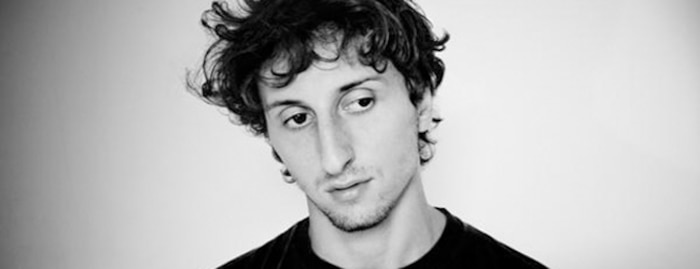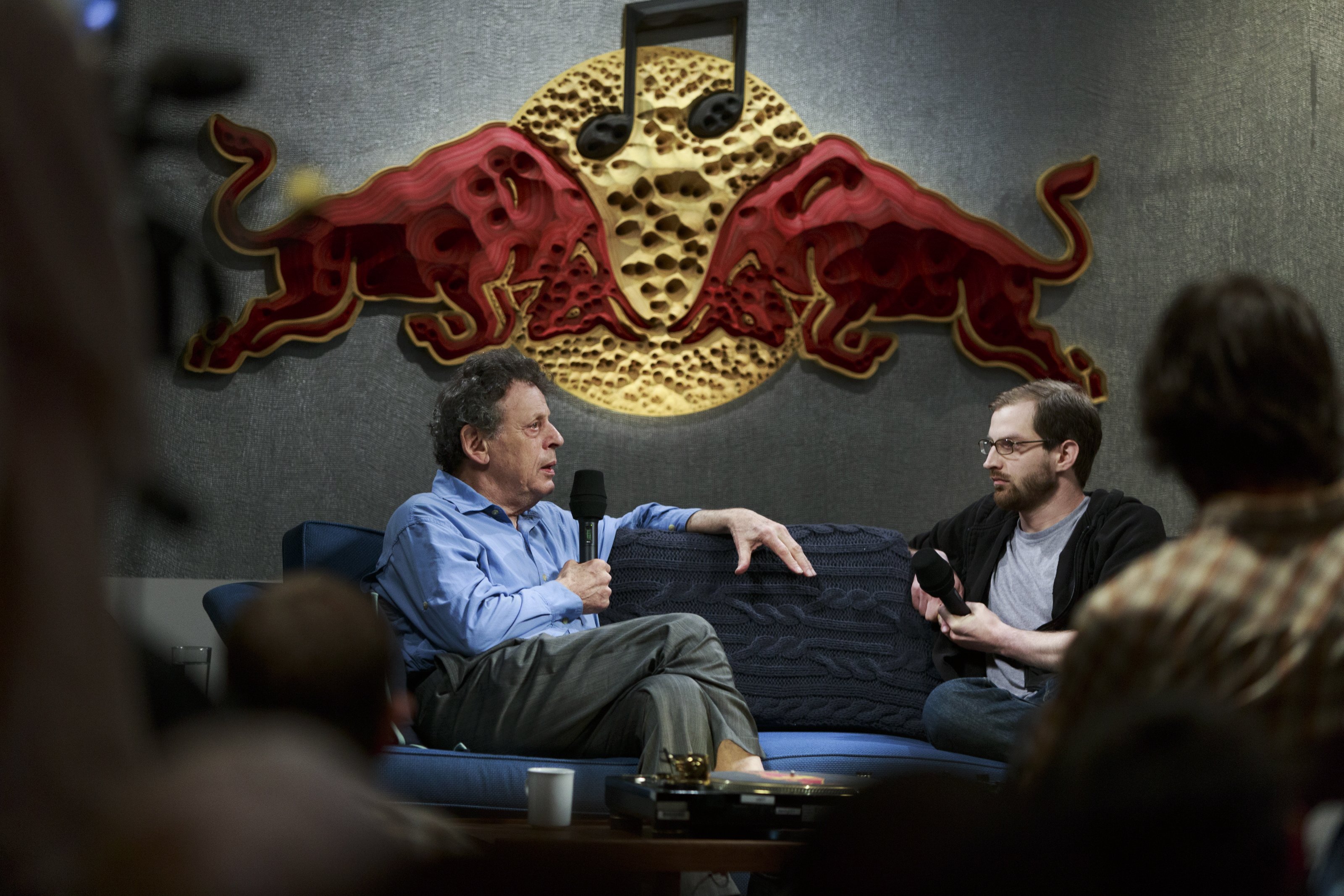When Philip Glass Met Ravi Shankar
When X Met Y is a series on RBMA that sheds light on what happened when two creative minds got together for the first time. In this edited and condensed excerpt from his lecture at the Red Bull Music Academy in New York last year, classical composer Philip Glass talks about the impact that meeting Ravi Shankar had on his music.
A lot of important things happened to me in Paris. Not only was it the music, but also that’s where I first began really working in the theater, too. Oddly enough, there was a lot of theater work going. I began working in movies then, too. So that would’ve been in the early ’60s. It’s quite a while ago. I went there to kind of finish my training. It had begun in America; I’d been at Juilliard. But it turned out to be more like a complete – how can I say – renovation, almost like taking the whole thing apart and putting it back together.
I got a Master’s degree from Juilliard, but I felt there were things about music that I didn’t understand. And which, by the way, I still don’t understand.
One reason is that I had a very good teacher. Her name was Nadia Boulanger. She held us to the highest standards that she could find for us, and that would’ve been the classics. That was a lot of Bach and a lot of Mozart, and she really made you learn that, until you actually could dream in that language. For the first year I was with her, I could do almost nothing but try to keep up with what she wanted me to do. In Paris it’s dark in the winter, because it’s in the north. So it was dark when I woke up, and it was dark when I stopped. It was a good eight or nine hours of work a day, just to keep up with that. So it was very intense. It was a kind of a crazy thing to do. I already had the final degrees that I needed from Juilliard. I was 25 years old. I was supposedly done with that. And it turned out I was just beginning.
I got a Master’s degree from Juilliard, but I felt there were things about music that I didn’t understand. And which, by the way, I still don’t understand. I don’t mean to say that I even solved any of those problems. I still feel the more I do, the less I understand about how it really works. But at that age, I hadn’t really arrived at a personal language, which happened very soon after that. Because, at the same time, I had the very good luck of being hired by Ravi Shankar to be his assistant.
There was a film score called Chappaqua, which I was hired to notate. That would’ve been in 1964 or 65. Meeting Ravi was just blind luck. A friend of mine was a photographer who was working on the set. Usually they had a photographer who would photograph all the parts of the film, so if they had to go back and re-do something, they could set it up again. They were looking for someone who spoke English and French and could write music, and he said, “Oh, I have this friend. He can do that.” And I got called, and I had no idea... you have to remember, this is before The Beatles had met Ravi, so he was pretty much unknown in the West. And this music would’ve been very exotic, at that time. Which, now, it doesn’t seem exotic at all. But in the ’60s, this was the first time this kind of music had been heard. At least in the West. Of course, a very big tradition in the East.
So I went to meet Ravi. At that time, I think he was about 45, and I was about 20 years younger than him. And it was a very intense situation. It was my second year with Boulanger, actually. And I had to solve the problem of notating the music. I had to write his melodies down in a way that the Western musicians could play but would reflect the actual rhythmic nuances of what he was writing. And I had about half an hour to do that, because I would’ve been fired if I hadn’t done it.
It was a big problem, because no one had really thought about it. I had never heard Indian music before, at that point, and very few people in the West really knew it in any thorough way. So, basically, what I had to do is: I was listening to the music, I was writing it down. And the difficulty was getting the rhythmic emphasis on the right notes. I would write it down, they would play it back, and Alla Rakha, who was the drummer, the tabla player, he would say, “No, no, no, no, no, no.” And I would write it again and again, and they kept saying, “No, no, no.” And then the French musicians began advising me, then that became even worse; I had all of them on top of me.
And then finally I did a remarkable, intuitive thing, which is I took the music I had written down and I erased all the bar lines. And suddenly, I saw something which I hadn’t seen before, which was that I saw the patterns. It went over bar lines. Because he didn’t use bar lines. I was using bar lines because that’s what we had been taught to do. But when I took the bar lines away, I saw the flow of the rhythm that I hadn’t seen. This was actually just luck, in a certain way. I saw it, I analysed it very quickly, and I saw also that there was a cycle of 16 notes that kept coming up. Later, I found out that was called a taal.
I did a remarkable, intuitive thing, which is I took the music I had written down and I erased all the bar lines. And suddenly, I saw something which I hadn’t seen before.
Did it change the conception of writing my own music? Well, that was an interesting point. Because on the one hand I was learning what we would call the basis of central European music, which is basically harmony, counterpoint, that kind of stuff. And I was learning it in a very thorough way, from a woman – Boulanger – who was a great teacher and was unrelenting. I took lessons in her home, and she would just throw me out if there were any mistakes. And very quickly I learned how to write that kind of music without making mistakes. So that was on the one hand. On the other hand, by the second year I was now working with Ravi Shankar in a tradition of music that was very, very different. But obviously, of a very sophisticated nature, with a history of its own, and its own kinds of rules. There is no root movement or harmonic movement in the Indian music. There’s a lot of ornamentation, and the rhythmic structure becomes the overall structure of the piece. That doesn’t happen in our Western music. At least it didn’t then.
Immediately, almost, I began to experiment with the idea of taking the training I had from Boulanger and mixing it with the work I had been doing with Ravi Shankar. Almost immediately I began doing that. And I began writing music for plays at that time. We were living in Paris. I was working in a little theater company. And, you know, there were a lot of things going on in Paris at that time. Besides Godard and Truffaut, who were making new movies then, Jean Genet was still doing new plays, [Samuel] Beckett was doing plays. Paris was a very interesting place in the ’60s.

This feature is part of a week of articles guest curated by Stroboscopic Artefacts boss Lucy.
Says Lucy, “The basic concepts of Indian classical music are symmetrically different from Western classical music. In the West you have a beginning and an end. For them, it’s more about cycles. This concept of cycles invade everything – from philosophy to music. Ravi Shankar was the first person that made this so evident to the Western public. He kind of stepped out from the academy, I’d say, into human communication, the basic one. This was hugely criticized by his own guys. Still him, together with Alla Rakha, managed to translate this sense of things to the western culture exactly when the western culture was ready for it.
My first approach to Philip Glass was through the Godfrey Reggio movie Koyaanisqatsi. I didn’t know who Philip Glass was when I saw it. My brother, Ignazio Mortellaro from Oblivious Artefacts, showed it to me. He was into the visual thing. But my mind was fading out from that. It was amazing and incredibly beautiful, but I was magnetized by what I was hearing. From that movie I found Einstein on the Beach and works like Satyagraha, but it was Koyaanisqatsi that opened up an entire world of things. I have to admit, for example, that my own tracks on the Stellate series were hugely influenced by Philip Glass’ techniques.”
To check out more of the features that Lucy picked out, check out his guest curator hub page.

